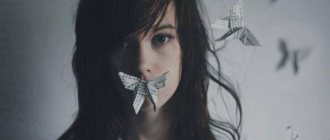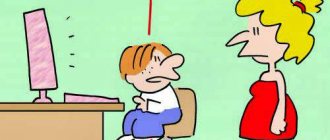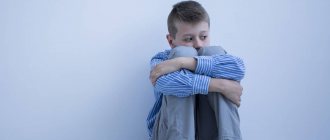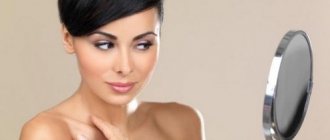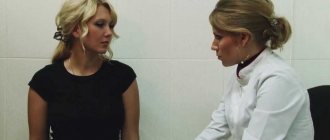It’s hard to imagine a less original way to express yourself than to talk about your creativity. Job vacancies and resumes are filled with this quality. Employers demand creativity from their employees, but are skeptical about mentioning it on their work records. It turns out that creativity is a stumbling block over which many people have already broken their legs. What to do in this case? How to understand what creativity is? Is it worth developing it? How does creativity develop? Can you improve it yourself? Let's talk creatively about creativity.
Creativity from a psychological perspective
According to Alice Paul Torrance, creativity includes increased sensitivity to problems, to deficits or inconsistencies in knowledge, actions to identify these problems, to find solutions to them based on hypotheses, to test and change hypotheses, to formulate the result of the solution. To assess creativity, various tests of divergent thinking, personality questionnaires, and performance analysis are used. To promote creative thinking, learning situations that are open-ended or open to the integration of new elements can be used, with students encouraged to pose multiple questions.
Expert and experimental assessments of a person’s ability to produce knowledge show that human creative abilities are not very great. By involving all employees in the continuous improvement of the organization (Kaizen method), the creativity of the organization increases dramatically. [ source not specified 3297 days
]
There are psychological tools for measuring creative thinking; The most famous in world psychological practice is the Paul Torrance Test. This test allows you to evaluate:
- verbal creativity
- imaginative creativity
- individual creative abilities: fluency is a quantitative indicator, in tests most often it is the number of tasks completed.
- flexibility - this indicator assesses the variety of ideas and strategies, the ability to move from one aspect to another.
- originality - this indicator characterizes the ability to put forward ideas that differ from the obvious, well-known, generally accepted, banal or firmly established.
- the ability to see the essence of the problem.
- the ability to resist stereotypes.
The creative process and its stages
Creativity has a specific creative process
, repeated each time a unique result is obtained.
The essence of creativity
is to use personal talent and imagination to solve problems, achieve goals and realize purpose. The result of the creative process is a new, unique element that improves its creator or the environment and provides new possibilities.
The creative process consists of the following stages:
Preparation
A problem is formulated and the intention to solve it arises. Consciousness is filled with knowledge from all available sources (memory, books, magazines, Internet...). Hypotheses and assumptions are put forward. In a short period of time, an attempt is made to solve the problem based on the existing capabilities of consciousness.
Treatment
If the opportunities are not enough, then a temporary distraction is performed to another problem or matter. At this time, the solution to the problem is processed from consciousness to the subconscious. Subconscious processes begin to take place, invisible to humans and automatically generating new ideas until an acceptable solution to the problem is obtained.
Inspiration
After generating an idea that may possibly solve a problem, it is transferred from the subconscious to the conscious - inspiration appears. Usually this happens completely unexpectedly for consciousness and in completely random situations.
Grade
Having received an idea, the consciousness evaluates it for the possibility of using it to solve a problem. To do this, it analyzes and compares the idea with personal experience and determines whether it can be implemented under current environmental conditions.
Implementation
If no contradictions are found, then a decision is made to implement the idea. An implementation plan is formed and actual actions are carried out. The result is a tool, method, or technology that solves the original problem.
Examination
After implementing the idea and applying the result obtained, it is checked whether the problem is solved or not. Proof or refutation of the put forward hypotheses and assumptions is carried out. If the problem is not resolved, the process starts over. If the problem is solved, then the next problem is solved.
Creativity criteria
| This section is missing references to information sources. Information must be verifiable, otherwise it may be questioned and deleted. You may edit this article to include links to authoritative sources. This mark was set on January 30, 2011 . |
Creativity criteria:
- fluency - the number of ideas arising per unit of time;
- originality - the ability to produce unusual ideas that differ from the generally accepted ones;
- flexibility. As Ranko notes, the importance of this parameter is determined by two circumstances: firstly, this parameter allows us to distinguish individuals who show flexibility in the process of solving a problem from those who show rigidity in solving them, and secondly, it allows us to distinguish individuals who are original solve problems from those who demonstrate false originality.
- receptivity - sensitivity to unusual details, contradictions and uncertainty, willingness to quickly switch from one idea to another;
- metaphoricality - readiness to work in a completely unusual context, a penchant for symbolic, associative thinking, the ability to see the complex in the simple, and the simple in the complex.
- Satisfaction is the result of creativity. With a negative result, the meaning and further development of the feeling are lost.
According to Torrance
- Fluency is the ability to produce a large number of ideas;
- Flexibility - the ability to use a variety of strategies to solve problems;
- Originality - the ability to produce unusual, non-standard ideas;
- Elaboration is the ability to develop emerging ideas in detail.
- Resistance to closure is the ability not to follow stereotypes and to “stay open” for a long time to a variety of incoming information when solving problems.
- The abstractness of the name is an understanding of the essence of the problem of what is truly essential. The naming process reflects the ability to transform figurative information into verbal form.
Consequences of performing creative activities
Putting creativity into practice can increase risk
causing harm. This happens because there is not enough experience using new, untested ideas and tools to solve a particular problem or achieve a goal. But with experience and the development of creativity, an understanding will come of which original ideas are useful and which are harmful.
Some people whose creativity developed unconsciously
, feel insecure and uncomfortable because of their non-standard creative thinking. It is important to explain to such people that they are very useful and point them in the right direction. In addition to developing creativity, they should also develop self-confidence.
With the development of creativity comes faith
the fact that any, even the most absurd and unrealistic idea, will help achieve a certain goal.
This belief is one of the motives pushing for the implementation of revolutionary ideas and the creation of new, huge systems that solve global problems. As Henry Ford said: “ You may believe that you can.
You may believe that you cannot. In both cases you are right ."
Many successful people claim that 30-50% success
Their projects and companies are brought precisely by creative, original ideas generated by themselves or specially hired professionals with well-developed creativity.
They also note a vicious circle - creativity gives new successes, and these, in turn, are a source of creativity and inspiration. This suggests that man and creativity
are a single whole, which cannot exist without each other.
Therefore, constantly devote personal time to developing creativity.
and your creative abilities. This will always have a beneficial effect on success. Do not stop engaging in creative activity, because it is the main means in realizing your destiny.
WANT TO KNOW EVEN MORE ABOUT THIS?
Then read the book
Hypotheses about the origin of creativity
There are several hypotheses regarding the emergence of creative abilities. According to the first, it is believed that creative abilities arose in Homo sapiens gradually, over a long period of time, and were a consequence of cultural and demographic changes of mankind, in particular, population growth, by adding up the abilities of the most intelligent and gifted individuals in populations, with the subsequent consolidation of these properties in offspring. [ source not specified 2832 days
]
According to the second hypothesis, put forward in 2002 by anthropologist Richard Klein from Stanford University, the emergence of creativity was discontinuous. It arose as a result of a sudden genetic mutation about 50 thousand years ago[1].
Creativity, quality – innate or acquired
Creativity is a gift, a talent, if you will. All people are born with this quality, but over the years this ability can fade away, under the onslaught of rules, patterns, constants and human misunderstanding.
Suppose a wonderful writer Vasily lives in some town. He creates wonderful plays about the spotted dinosaur Malinchik, but over time the author realizes that this work of his sells very poorly, but his own poems for the New Year and birthdays are in great demand.
Then Vasily begins to churn out poems in batches, simply swapping the words “I wish,” “happiness,” “health,” and “love.” In just a year, it will be very difficult for Vasily to return to the dinosaur Malinchik and come up with some kind of extraordinary adventure related to him. He will lose all his creativity.
Literature
- Azarova N. M.. Creativity as a word and as a concept. // Criticism and semiotics, 21 (2014).
- Bogoyavlenskaya D. B. Intellectual problem of creativity. Rostov-on-Don, 1983.
- Bogoyavlenskaya D. B. Psychology of creative abilities. M.: "Academy", 2002.
- Druzhinin V.N. Diagnostics of general cognitive abilities. - M.: IP RAS, 1997.
- Druzhinin V.N. Problems of general abilities (intelligence, learning ability, creativity) - St. Petersburg; Peter, 2007.
- Torshina K. A. Modern studies of the problem of creativity in foreign psychology. M. 1997.
- Tunik E. E. Diagnostics of creativity. Torrance test. Methodical manual. St. Petersburg: Imaton, 1998.
- Stanislav Reich “Psychodiagnostics of creativity (review article)” Kyiv. 2011 - 6 p.
- Giftedness: abilities, motivation and creativity: a manual for teachers, psychologists, educational leaders / N. D. Alekseev, A. S. Isaenko, T. I. Kuzey - Minsk: Adukatsyya i Vyhavanne, 2006. - 88 p.
- Mednich SA The associative basis of the creative process // Psychol. review. 1969. No. 2.
- Torrance EP Guiding creative talent - Englewood Cliffs. NY: Prentice-Hall, 1964.
- Torrance EP The Torrance Test of creative thinking: Technical-norm manual. Ill, 1974.
- Wollach MA, Kogan NA A new look at the creativity - intelligence distinction // Journal of Personality. 1965. No. 33.
Content
- What is creativity
- Creativity, quality – innate or acquired
- What does creativity depend on?
- Your inner critic
- The benefits of creativity
- How to develop creativity skills
Hello dear readers. Now people seem to have calmed down a little with “creativity”. Not so long ago we were literally tortured with this word. Some were looking for creatives, others offered their creative services, and others promised a non-standard creative approach. It was impossible to live a day without hearing this word at least three times.
Meanwhile, this term raises a lot of questions, at least for me, as a psychologist. I am sure that thinking readers are no less puzzled. Creativity - what is it in principle? Can it be measured? How to understand whether the fruit of labor in front of you is creative or just some kind of nonsense?
Creative picture, example.
I immediately remember an episode from the film “What Men Talk About,” when the hero talks about a museum in which it is unclear whether the toilet is really closed for repairs or is it just a newfangled installation.
Well, let's figure it out together. What does the concept of creativity mean in psychology, does this quality depend on intelligence or other human properties, is it possible to develop it, and much more interesting things.
Exercises ↑
There are the following types of exercises to develop creative and intellectual abilities:
- Science fiction writer. Take any dictionary or book and randomly choose two different words or phrases. Then try to think of a relationship between them, perhaps by combining them into a funny story. An excellent exercise for developing thinking;
- Mad Artist . All you need is a blank sheet of paper and markers or pencils. Now try to depict an animal that does not yet exist in nature. Don't forget to come up with a name for your creation;
- Crazy architect. Now your task is to depict a house of the most unusual design. Imagine that, for example, everything in it should be of different geometric shapes: the roof is round, the windows are triangular, etc. Now imagine what it will all look like in reality;
- Original naming . Try to give each familiar object a new name. For example, an orange is citrus, a window is a window, etc.;
- New solution . When communicating with friends and colleagues, try to constantly come up with something new. For example, when discussing plans for the weekend, put forward all the ideas that come to your mind, even the most unrealistic ones;
- Monologue alone . When you are alone with yourself, think about a problem. Then answer these questions: What do I see? What do I hear? What do I feel? What do my thoughts mean?
There are still a huge number of exercises and trainings for developing creative abilities. Whatever techniques you choose, the main thing is that they force your thinking to work contrary to stereotypes and generally accepted opinion.
Notes
- Galperin P. Ya., Danilova V. L. Education of systemic thinking in the process of solving small creative problems / Questions of psychology. 1980, No. 4, pp. 31-36
- Creativity - Psychologos (Russian). www.psychologos.ru. Retrieved May 3, 2020.
- The history of creativity tests (undefined)
. lektsii.com. Retrieved May 3, 2020. - 7.2. Divergent thinking as a creative ability (Russian). StudFiles. Retrieved May 3, 2020.
- Human creative abilities are genetic mutations: Psychology OnLine.Net
Your inner critic
To be creative, you just need to create, invent, and fantasize. Over time, this takes less and less time. You train your brain to work faster.
Unfortunately, if you have some problems with creativity, you may also have difficulty coming up with ideas for creativity. What to choose? Maybe it’s worth drawing or sculpting from plasticine? Write or photograph?
I understand you perfectly. One day a young guy came to me and was taken out of this world for 2 minutes by the request: “Imagine any fruit in front of you.” He was really very puzzled, and then began to ask leading questions: “Should this be a ripe fruit?”, “What color?”, “And this is... Our, domestic fruit?”
Creative process.
There is a critic inside each of us. It is he who prevents our creative potential from fully revealing itself. Such a critic tormented the guy “with the fruit” for 2 minutes, he whispered to him: “You could be wrong,” “You will choose the wrong fruit,” “It’s a hot sausage, but is a banana the right fruit? You will disappoint the woman sitting in front of you!
In fact, there is nothing wrong with internal criticism. It is he who forces us to put commas in the text, not to post photos with red eyes on Instagram, and so on, but sometimes criticism needs to be silent for a bit. The only way to teach him to do this and not be too strict is to make friends.
Just do something, create, tell him and yourself: “I’ll try, and then we’ll see what comes of it.” Give someone else a chance to talk about your idea. And do this systematically so that your skills improve, your skills sharpen and your confidence in your abilities increases. You may find the publication useful: “How to understand when you need to fight laziness, and when to give up being too demanding of yourself.”
Unusual "makeup".
Although, we have not yet touched upon a very important question, why do this at all?

